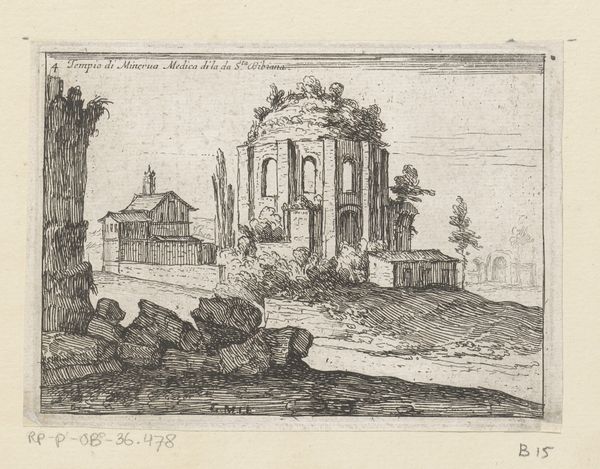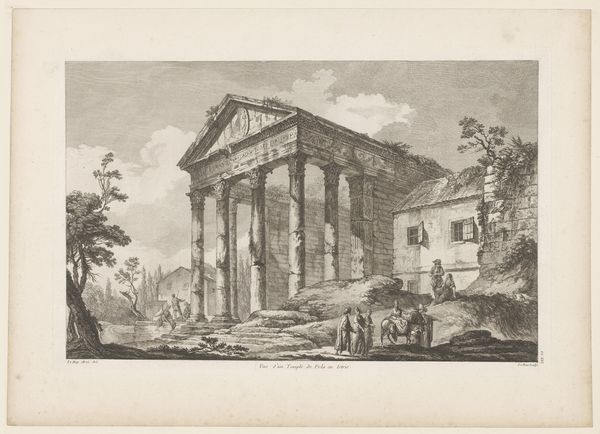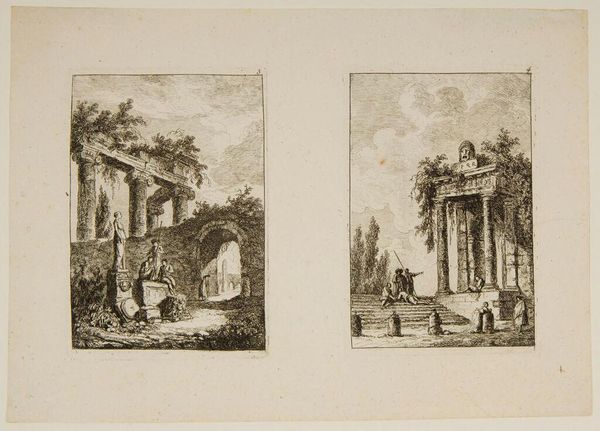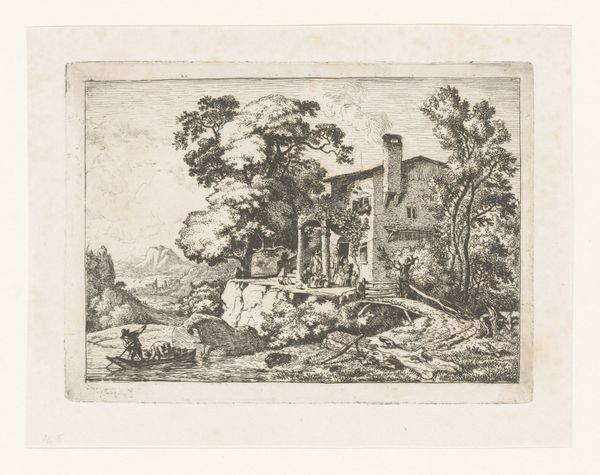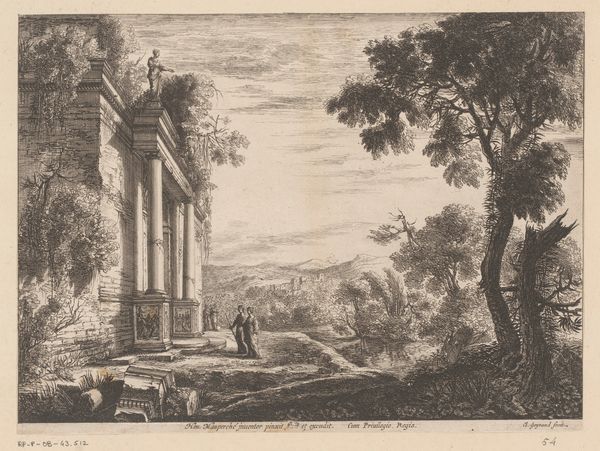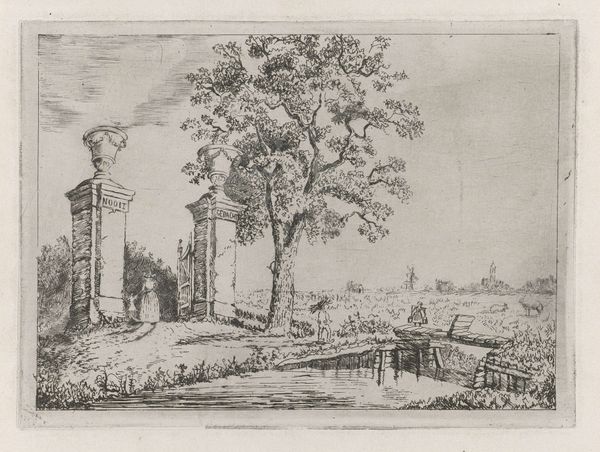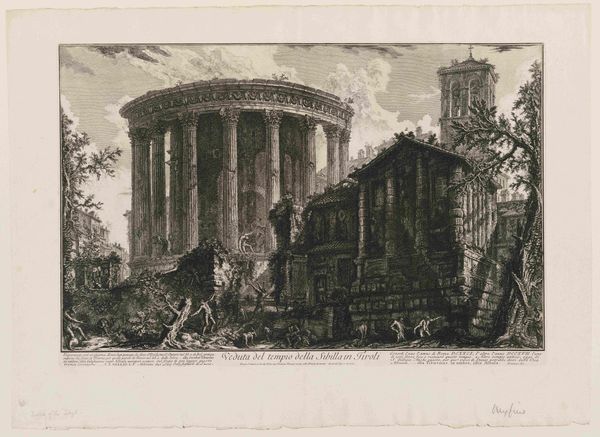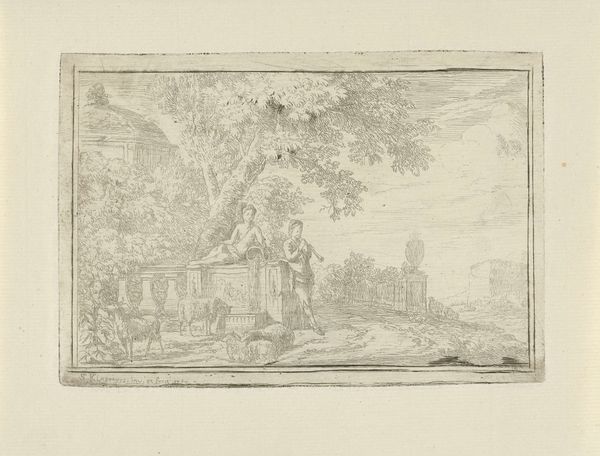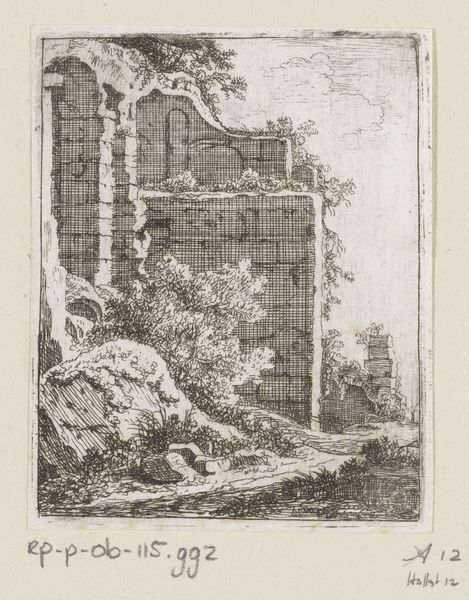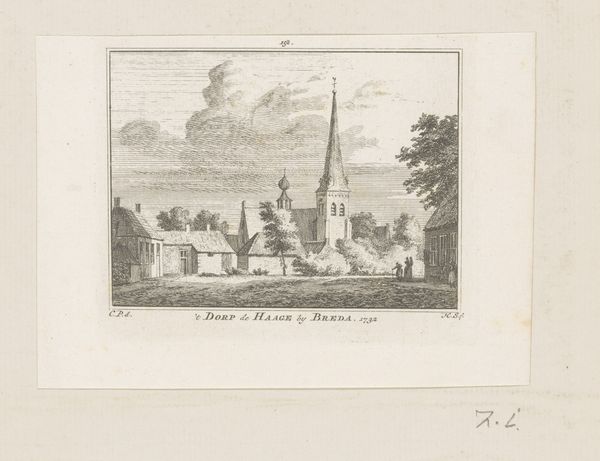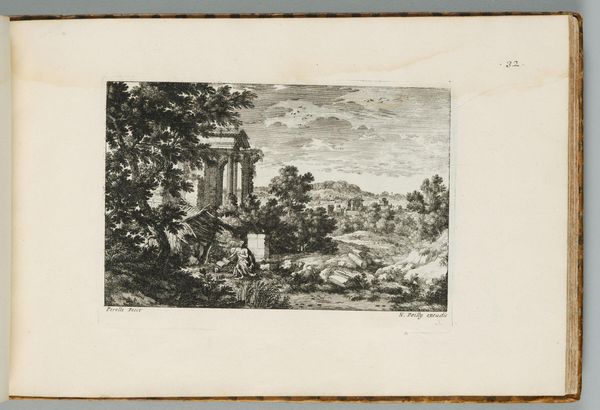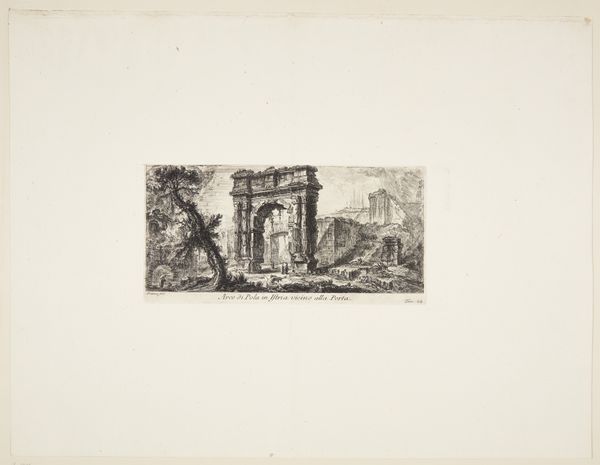
print, etching, engraving, architecture
#
neoclacissism
# print
#
etching
#
landscape
#
engraving
#
architecture
Dimensions: 131 mm (height) x 195 mm (width) (plademaal)
Curator: What a striking image. We're looking at "Sibylla-templet i Tivoli", an etching and engraving print dating from the latter half of the 18th century, credited to Laura Piranesi. It's currently housed here at the SMK. Editor: There's a melancholy beauty to it, I think. A ruin rendered with such painstaking detail... It emphasizes the inexorable passage of time, doesn't it? Curator: Indeed. Piranesi, coming from a family of renowned printmakers, participates in the 18th-century fascination with classical ruins. Tivoli, a site brimming with ancient history, became a symbolic destination in Neoclassical art, embodying both the glory of the past and the acceptance of nature reclaiming lost dominance. The image subtly hints at colonialism via its imagery. Editor: The composition is remarkable. See how the artist uses light and shadow, with the skeletal structure and stark hatching to suggest a powerful geometry weakened, but unbowed. Even within a monochrome print, there is great depth. I admire Piranesi's ability to establish tonal values to draw our focus around the building. Curator: Absolutely, and consider the context! Piranesi was working during a period of immense social upheaval and political reform in Europe. The rediscovery, representation, and veneration of ruins like the Temple of Sibyl can also be interpreted as visual declarations of continuity in a period of constant political change, where social structures were in a continuous state of collapse and rebuilding. Editor: Yes, and observe how the medium of etching lends itself particularly well to this subject matter. The sharp, incisive lines mimic the fractured nature of the ruins themselves. And see how Piranesi’s treatment brings dynamism to an ostensibly static subject. Curator: A visual testament to a changing social landscape. It shows the value attached to history when other aspects of civilisation are challenged. Piranesi provides a snapshot of stability sought through ancient places. It reminds viewers that ruins were more than picturesque views; they also were emblems laden with socio-political meaning. Editor: This deep dive illustrates Piranesi's remarkable ability to transform ruins from physical structure into vessels laden with social messages. Curator: And by studying works such as "Sibylla-templet i Tivoli", we uncover the ways that we actively produce cultural values in periods of political struggle.
Comments
No comments
Be the first to comment and join the conversation on the ultimate creative platform.
